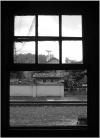Resumo
Através do estudo de caso de um trecho da linha tronco da Companhia Mogiana de Estradas de Ferro, localizado nos Municípiosde Campinas e Jaguariúna, Estado de São Paulo, Brasil, a pesquisa de mestrado “Habitar o Patrimônio Cultural: o casodo ramal ferroviário Campinas-Jaguariúna” faz uma reflexão acerca das formas de apropriação do patrimônio industrial porseus habitantes. A análise, que tem como objetivo identificar as implicações das diferentes formas de apropriação dos habitantesno patrimônio industrial, fundamenta-se no inventário do complexo ferroviário e no levantamento de suas formas deapropriação. Neste artigo, é apresentada a fundamentação teórica da análise, bem como resultados parciais desta pesquisa.La revista Apuntes se encuentra registrada bajo la licencia Creative Commons Reconocimiento 4.0 Internacional. Por lo tanto, esta obra se puede reproducir, distribuir y comunicar públicamente en formato digital, siempre que se reconozca el nombre de los autores y a la Pontificia Universidad Javeriana. Se permite citar, adaptar, transformar, autoarchivar, republicar y crear a partir del material, para cualquier finalidad (incluso comercial), siempre que se reconozca adecuadamente la autoría, se proporcione un enlace a la obra original y se indique si se han realizado cambios. La Pontificia Universidad Javeriana no retiene los derechos sobre las obras publicadas y los contenidos son responsabilidad exclusiva de los autores, quienes conservan sus derechos morales, intelectuales, de privacidad y publicidad.
El aval sobre la intervención de la obra (revisión, corrección de estilo, traducción, diagramación) y su posterior divulgación se otorga mediante una licencia de uso y no a través de una cesión de derechos, lo que representa que la revista y la Pontificia Universidad Javeriana se eximen de cualquier responsabilidad que se pueda derivar de una mala práctica ética por parte de los autores. En consecuencia de la protección brindada por la licencia de uso, la revista no se encuentra en la obligación de publicar retractaciones o modificar la información ya publicada, a no ser que la errata surja del proceso de gestión editorial. La publicación de contenidos en esta revista no representa regalías para los contribuyentes.


